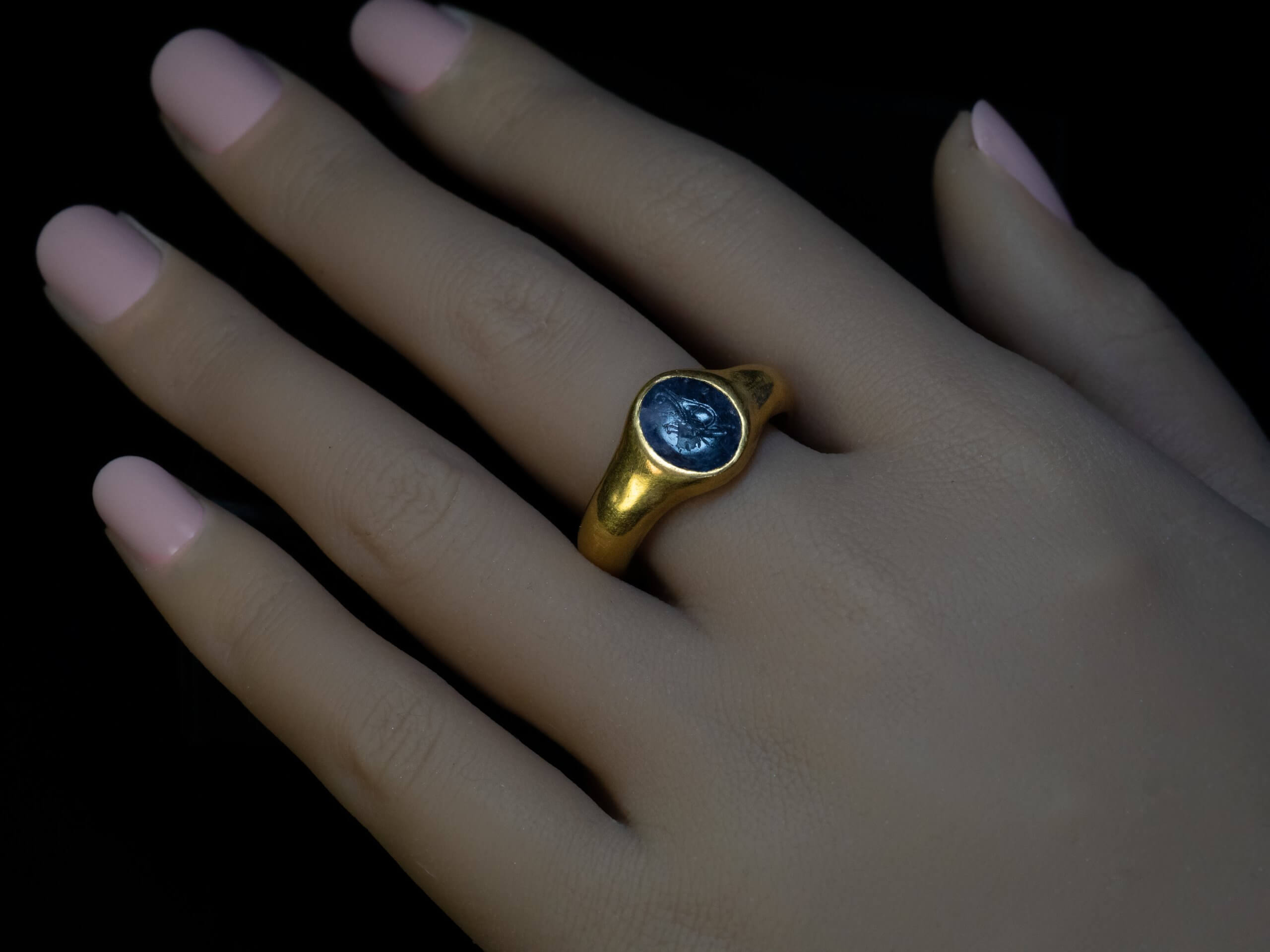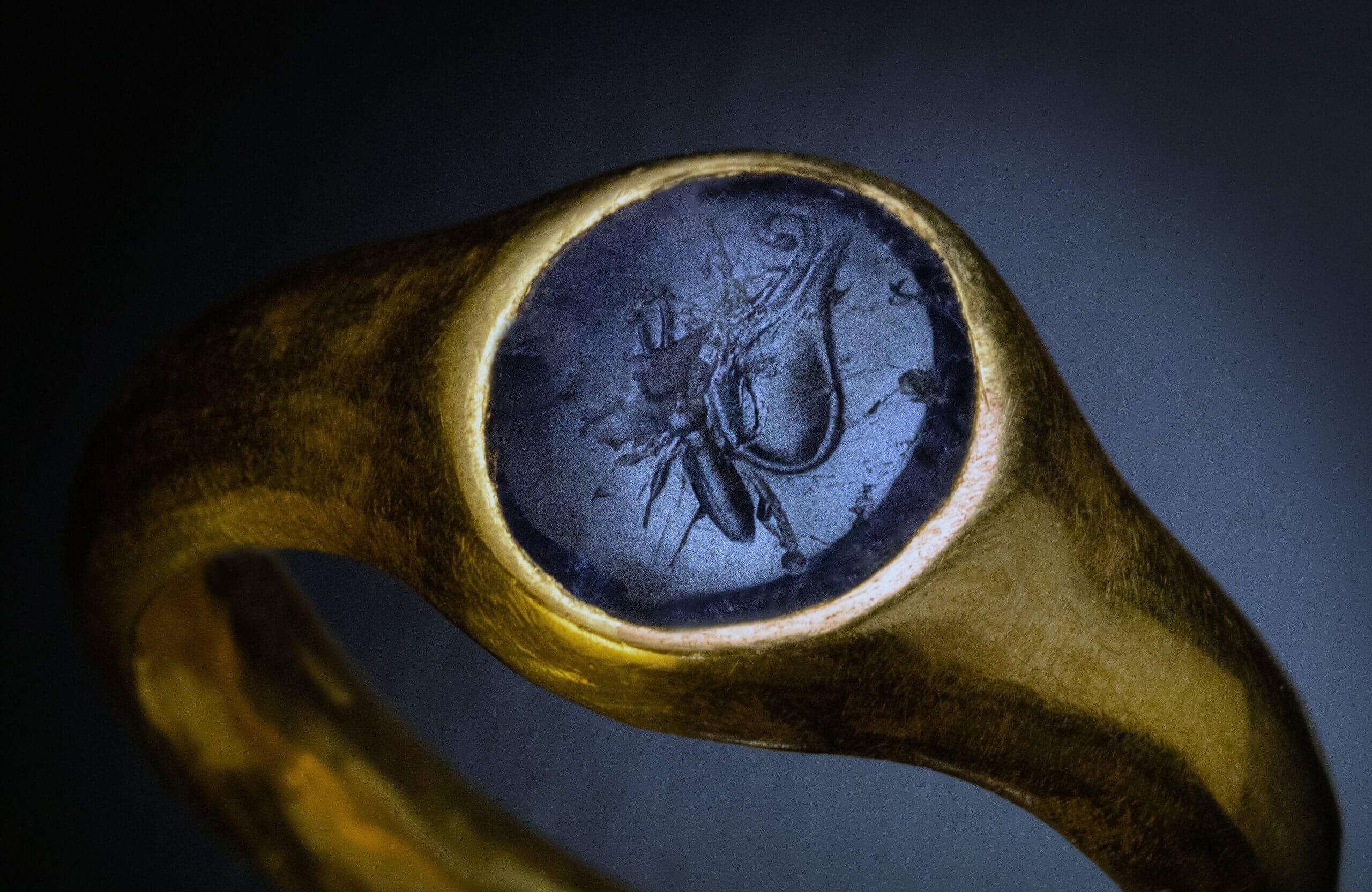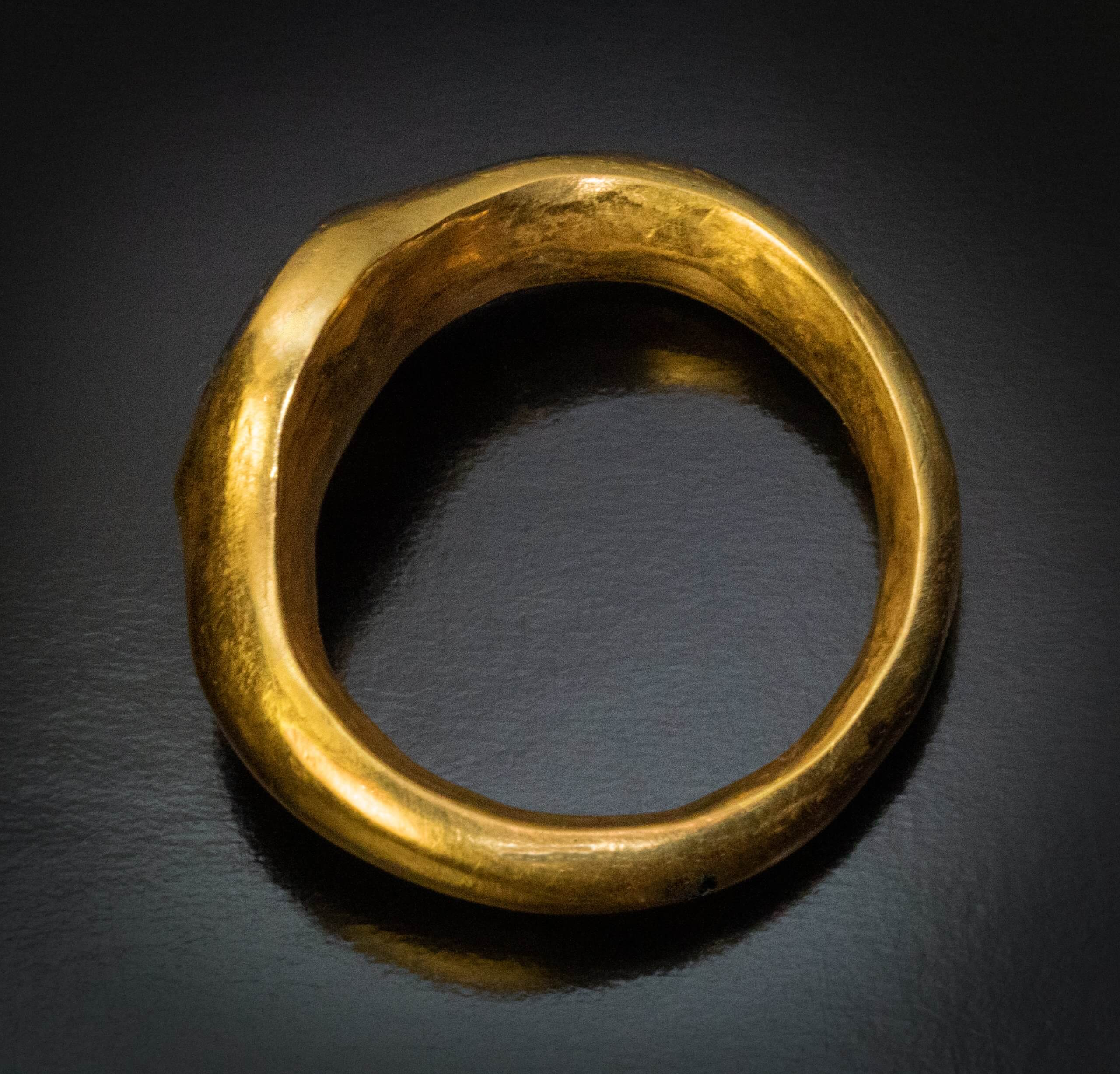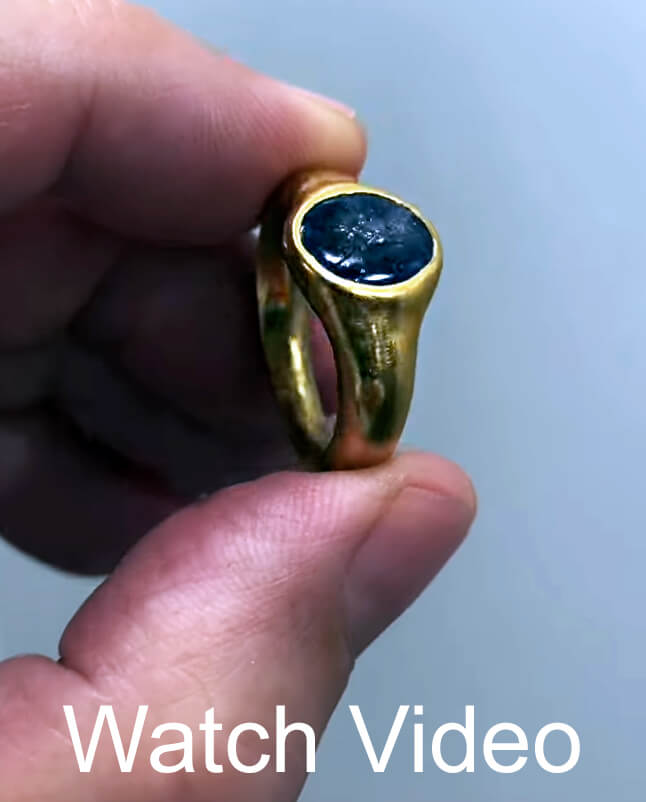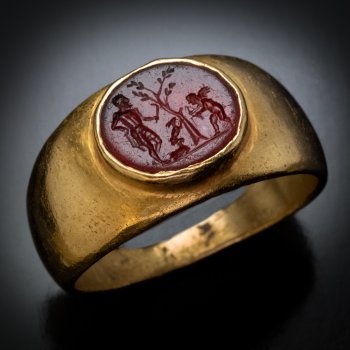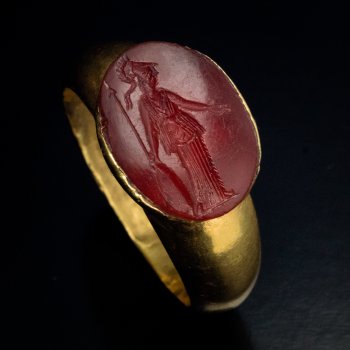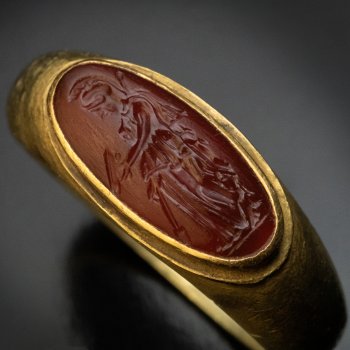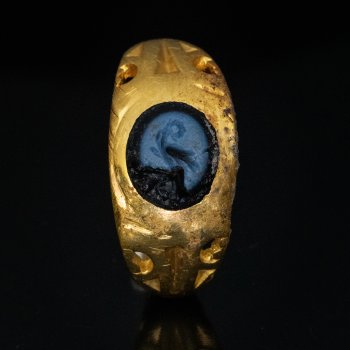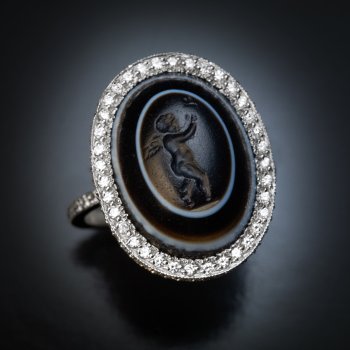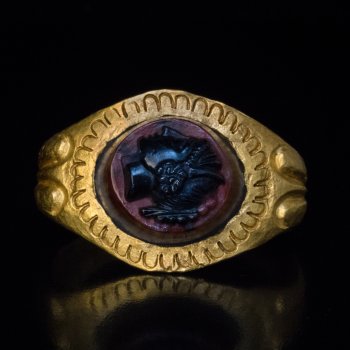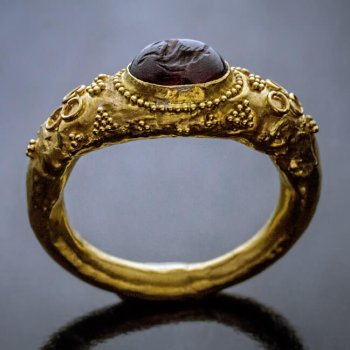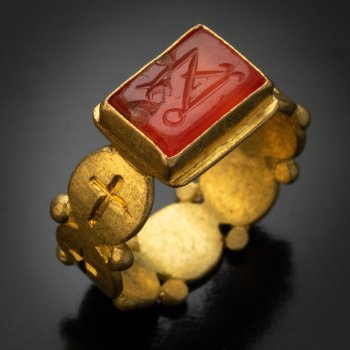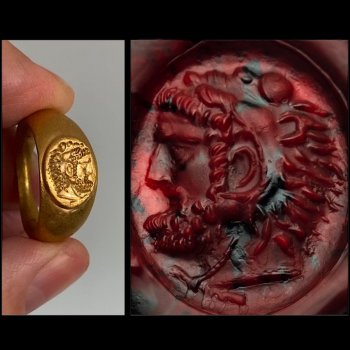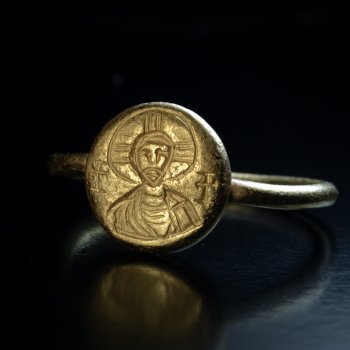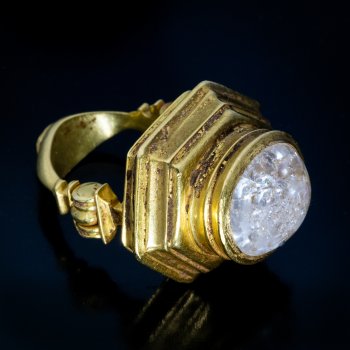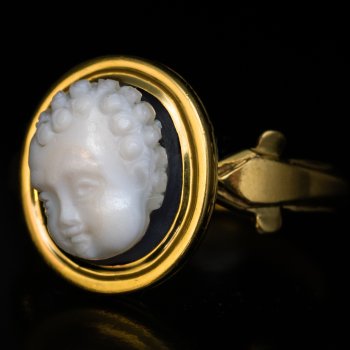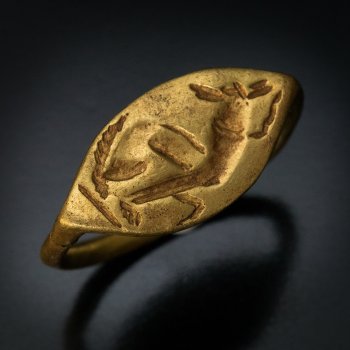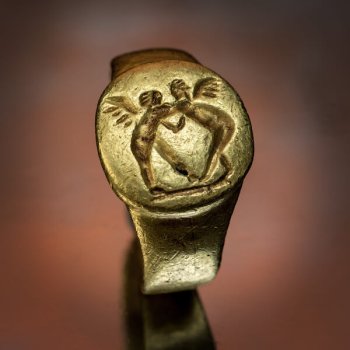A finely modeled hollow high karat gold ring from the Roman Empire, circa 1st to mid-2nd century AD.
High-karat gold (approximately 22.37 Kt) and sapphire intaglio
This exceptional ancient ring is set with a sapphire intaglio intricately engraved with a butterfly motif.
In Greco-Roman mythology, the butterfly symbolized the human soul – psyche in ancient Greek meaning both “butterfly” and “soul.” Psyche, the beloved of Eros in Apuleius’s Metamorphoses, attains immortality by drinking ambrosia and is depicted with delicate butterfly wings, representing the soul’s transformation and eternal life.
During antiquity, sapphires were sourced exclusively from Ceylon (modern day Sri Lanka), far beyond the Mediterranean world. Such stones were rare and highly prized, especially when engraved. Ancient sapphire intaglios are exceptionally uncommon – notably, none are recorded among the 480 pieces listed in the J. Paul Getty Museum’s 1992 Catalog of Ancient Gems.
Comparable hollow gold Roman rings of this form are illustrated in Treasures of the Ferrell Collection by Jeffrey Spier, p. 55.
This ring is in excellent condition – all original, intact, and wearable. The sapphire bears a small flat chip in the center, yet the butterfly engraving remains sharply defined. A remarkable and extremely rare example of Roman goldsmithing and gem engraving artistry.
Metal analysis: 93.22% gold, 2.29% silver, 2.31% copper, 2.19% zinc.
Weight is 5.47 grams
The sapphire measures 10 x 8 mm.
Approximate ring size 8.5 (18 mm)


